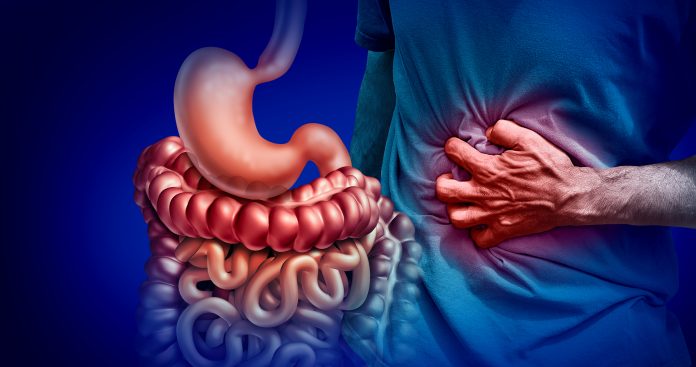
Direct injection of neonatal mesenchymal stem cells (MSCs) from discarded heart tissue from surgery could aid in healing Crohn’s disease, according to new research from investigators at the Ann & Robert H. Lurie Children’s Hospital of Chicago. The study, published in the journal Advanced Therapeutics, found that the technique, reduced intestinal inflammation and promoted wound healing in a mouse model of Crohn’s disease-like ileitis, a disease characterized by intestinal inflammation and tissue damage.
“Neonatal cardiac-derived mesenchymal stem cells have been used in a clinical trial to repair an injured heart, but this is the first time these potent cells have been studied in an inflammatory intestinal disease model,” said senior author Arun Sharma, PhD, director of Pediatric Urological Regenerative Medicine and Surgical Research, and research associate professor of Urology and Biomedical Engineering at Northwestern University. “Our results are encouraging and definitely provide a new platform to potentially treat aspects of chronic inflammatory bowel diseases.”
According to the researchers, the potential new approach could become an alternative to current Crohn’s disease drugs which have shown diminishing effectiveness as well as increased risks of gastrointestinal dysfunction. Since Crohn’s disease is an autoimmune disorder, there are a handful of immunotherapies that have shown the potential to improve the patients quality of life. Other studies have demonstrated that steroids, along with thiopurine can modulate inflammation and promote mucosal healing in a chemically induced murine model. But there are a host of adverse events also associated with such therapies including immune reaction, development of skin lesions, peri-operative morbidity, post-management infections, and increased risk for malignancies.
Stem cells have been shown to have a therapeutic effect treating a range of immune-related diseases due to their immune-modulatory and pro-regenerative potential. But the results for the use of MSCs in colitis and IBD have been minimal. Further, the researchers noted, the chemically induced model of the disease has the shortcoming of not closely mimicking Crohn’s disease pathology as observed in patients. “Therefore, in this study, we employed a mouse model that develops CD-like ileitis that resembles intestinal lesions of CD patients in clinical settings,” the researchers wrote.
Also of note is that MSCs derived from adult donors have exhibited reduced proliferation rates as well as increased immune rejections, two factors that have limited the effects of potential therapies using these cells. Recent findings from Sharma’s team in using MSCs for myocardial infarction (MI) have demonstrated that the therapeutic efficiency of MSCs is strongly influenced by the age of the donors. “In this regard, the adult MSCs administration showed poor engraftment, low survival, limited paracrine effect, and reduced cardiac function outcome in the rat MI model,” noted the investigators.
For this reason, the team turned to neonatal mesenchymal stem cells (nMSCs), since previous research from the group showed superior functional outcomes compared to adult MSCs in their MI model.
Based on these findings, Sharma and the research team sought to find whether these nMSCs could show a similar healing effect for Crohn’s disease. Based on the new findings, Sharma believes it could be possible to use the stem cells to treat this chronic disease, as long as he and his team can develop method for their administration to the patient. In this early research, the NSCs were delivered via a surgical procedure that allowed the investigators to inject the cells directly into the inflammatory lesions in the small intestine. The team will now seek to develop alternate methods of MSC delivery such as direct injection into a patient’s vein, or delivering the cells directly to the intestine via endoscopy.
“Ultimately our goal is to utilize this cell type as treatment, but also as a preventive measure, before signs and symptoms of Crohn’s disease develop,” said Sharma. “We also might be able to apply this approach to other inflammatory diseases. The potential is enormous, and we are excited to move forward.”













